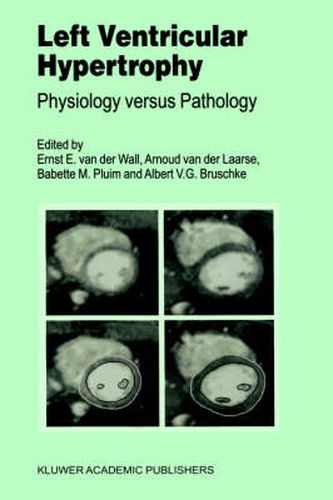Readings Newsletter
Become a Readings Member to make your shopping experience even easier.
Sign in or sign up for free!
You’re not far away from qualifying for FREE standard shipping within Australia
You’ve qualified for FREE standard shipping within Australia
The cart is loading…






This title is printed to order. This book may have been self-published. If so, we cannot guarantee the quality of the content. In the main most books will have gone through the editing process however some may not. We therefore suggest that you be aware of this before ordering this book. If in doubt check either the author or publisher’s details as we are unable to accept any returns unless they are faulty. Please contact us if you have any questions.
The importance of left ventricular hypertrophy (LVH) in cardiovascular disease has gained wide recognition. LVH is a highly important risk factor associated with major cardiovascular events, including symptomatic heart failure, particularly in patients with systemic hypertension. In recent years much has been learned about the genetics, molecular background, prevalence, incidence and prognosis of LVH. A variety of noninvasive methods has emerged for detecting LVH and the assessment of reversal of hypertrophy, yet a lot of controversy remains about the connotations and clinical implications of LVH. For instance, in the athlete’s heart LVH may constitute a physiological adaptation to pressure overload, which normalizes following discontinuation of strenuous physical activity. On the other hand, in particular in patients with hypertension, LVH denotes a serious prognosis in the course of hypertension. In these patients LVH should be regarded as a grave prognostic sign rather than an innocent compensatory phenomenon. The distinction between physiologic and pathophysiologic LVH is the basis for this book. The text is a bibliographical reflection of a Boerhaave Symposium held on April 9, 1999, in Leiden, The Netherlands. At this symposium the major issues in dealing with LVH were discussed, including etiology, genetics, detection, and therapy. In particular, the book includes advances in detection methods for LVH such as magnetic resonance imaging and spectroscopy. Furthermore, much attention was paid to the molecular and genetic approach of LVH. This book should be useful to clinical cardiologists, fellows in cardiology, general internists, radiologists, cardiothoracic surgeons, biochemists, physiologists, pharmacologists, and basic research fellows in understanding the most recent insights in the background of physiologic versus pathologic LVH.
$9.00 standard shipping within Australia
FREE standard shipping within Australia for orders over $100.00
Express & International shipping calculated at checkout
This title is printed to order. This book may have been self-published. If so, we cannot guarantee the quality of the content. In the main most books will have gone through the editing process however some may not. We therefore suggest that you be aware of this before ordering this book. If in doubt check either the author or publisher’s details as we are unable to accept any returns unless they are faulty. Please contact us if you have any questions.
The importance of left ventricular hypertrophy (LVH) in cardiovascular disease has gained wide recognition. LVH is a highly important risk factor associated with major cardiovascular events, including symptomatic heart failure, particularly in patients with systemic hypertension. In recent years much has been learned about the genetics, molecular background, prevalence, incidence and prognosis of LVH. A variety of noninvasive methods has emerged for detecting LVH and the assessment of reversal of hypertrophy, yet a lot of controversy remains about the connotations and clinical implications of LVH. For instance, in the athlete’s heart LVH may constitute a physiological adaptation to pressure overload, which normalizes following discontinuation of strenuous physical activity. On the other hand, in particular in patients with hypertension, LVH denotes a serious prognosis in the course of hypertension. In these patients LVH should be regarded as a grave prognostic sign rather than an innocent compensatory phenomenon. The distinction between physiologic and pathophysiologic LVH is the basis for this book. The text is a bibliographical reflection of a Boerhaave Symposium held on April 9, 1999, in Leiden, The Netherlands. At this symposium the major issues in dealing with LVH were discussed, including etiology, genetics, detection, and therapy. In particular, the book includes advances in detection methods for LVH such as magnetic resonance imaging and spectroscopy. Furthermore, much attention was paid to the molecular and genetic approach of LVH. This book should be useful to clinical cardiologists, fellows in cardiology, general internists, radiologists, cardiothoracic surgeons, biochemists, physiologists, pharmacologists, and basic research fellows in understanding the most recent insights in the background of physiologic versus pathologic LVH.